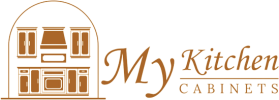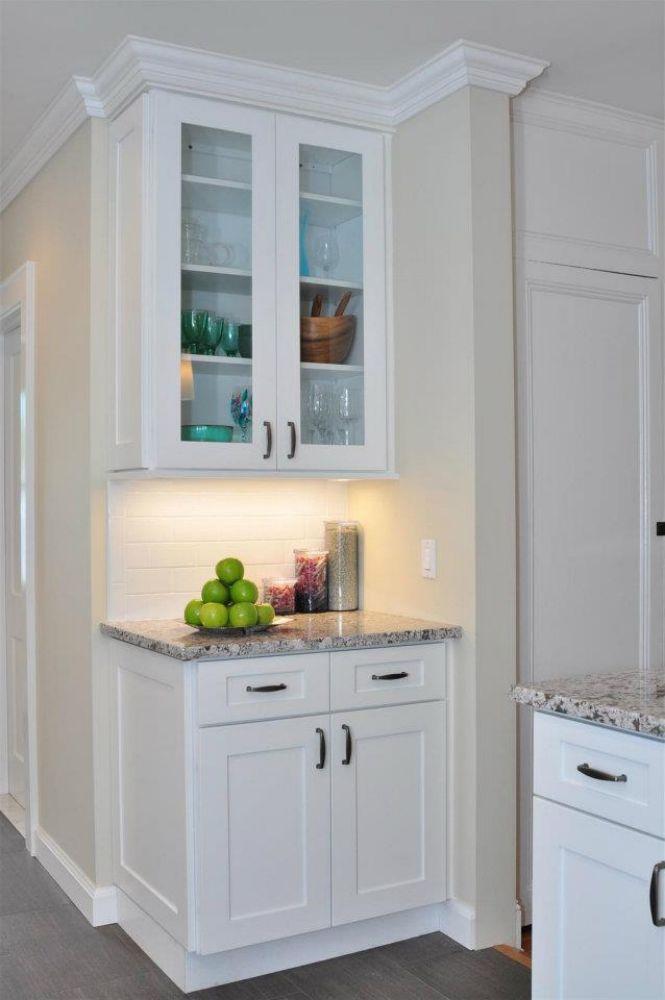Introduction to Avoiding Formaldehyde in Kitchen Cabinets
The modern kitchen has evolved beyond functionality—it’s now a central hub for family life, creativity, and health-conscious living. However, hidden dangers can lurk in the materials used to build cabinetry, particularly in the form of formaldehyde. This invisible chemical can negatively affect indoor air quality, triggering respiratory irritation, allergies, and long-term health risks. That’s why avoiding formaldehyde in kitchen cabinets has become a vital consideration for homeowners seeking safer, healthier environments. If you’re searching for certified, low-emission cabinetry designed to enhance air quality, visit Avoiding formaldehyde in kitchen cabinets for sustainable and health-conscious options.
Understanding the Presence of Formaldehyde in Kitchen Cabinets
Formaldehyde is a colorless gas commonly used in adhesives, resins, and coatings within furniture manufacturing. In cabinetry, it’s often found in pressed wood products like particleboard, MDF, and plywood. These materials can slowly release formaldehyde vapors into indoor air through a process known as off-gassing. For this reason, avoiding formaldehyde in kitchen cabinets is crucial to maintaining long-term air purity and overall household wellness.
The Environmental Protection Agency (EPA) recognizes formaldehyde as a potential carcinogen, and prolonged exposure—even at low levels—can contribute to health problems. By choosing formaldehyde-free or low-VOC products, homeowners can significantly reduce indoor pollutants and create a cleaner, healthier kitchen environment.
Health Implications of Formaldehyde Exposure in the Kitchen
The kitchen is one of the most used areas of any home, making it a prime location for indoor air quality concerns. Prolonged exposure to formaldehyde emissions can cause headaches, watery eyes, sore throats, and breathing difficulties. In severe cases, long-term exposure has been linked to certain types of cancers. Therefore, avoiding formaldehyde in kitchen cabinets is a proactive step toward protecting your family’s health.
Children and seniors are especially vulnerable to the effects of poor air quality. Because formaldehyde concentrations tend to rise in enclosed spaces, replacing or installing non-toxic cabinetry plays a major role in maintaining a healthy living environment for everyone at home.
Why Traditional Cabinet Materials Contain Formaldehyde
Traditional cabinets often rely on engineered wood materials that use urea-formaldehyde resins as binding agents. These resins are inexpensive, easy to work with, and widely available, which explains their prevalence in mass-produced cabinetry. Unfortunately, they emit formaldehyde gas over time, particularly in warm and humid conditions. The off-gassing process can continue for years after installation, compromising indoor air quality and occupant health.
By focusing on avoiding formaldehyde in kitchen cabinets, homeowners can make better material choices—such as selecting natural wood or Greenguard Gold-certified alternatives—that are designed for safety and sustainability.
The Role of Greenguard Certification in Formaldehyde Reduction
One of the most effective ways to ensure safety is to choose cabinetry that meets Greenguard Gold certification standards. This certification indicates that the product has been tested for more than 360 volatile organic compounds, including formaldehyde, and has passed stringent indoor air quality requirements. The process guarantees that the cabinets emit extremely low levels of harmful substances, contributing to a cleaner and healthier environment.
When it comes to avoiding formaldehyde in kitchen cabinets, Greenguard-certified products represent the gold standard of health-conscious construction, combining eco-friendly practices with exceptional quality.
Sustainable Alternatives for Avoiding Formaldehyde in Kitchen Cabinets
Eco-friendly cabinetry doesn’t just eliminate toxins—it also promotes sustainability. Homeowners can choose from a variety of sustainable materials that naturally resist formaldehyde contamination. These include:
-
Solid hardwoods: Naturally low in VOCs when sealed with water-based finishes.
-
Bamboo and reclaimed wood: Sustainable and renewable materials ideal for modern kitchens.
-
Formaldehyde-free MDF or plywood: Engineered using non-toxic adhesives.
-
Low-VOC finishes and sealants: Minimize surface emissions while maintaining beauty and durability.
Choosing these materials allows homeowners to achieve beautiful, functional kitchens while avoiding formaldehyde in kitchen cabinets entirely.
The Connection Between Air Quality and Cabinet Materials
Cabinet materials play a direct role in determining the air quality inside your home. Traditional composite woods that contain formaldehyde contribute to indoor air pollution, especially in newly renovated or poorly ventilated spaces. Over time, these emissions accumulate, impacting respiratory health and comfort. By contrast, certified or formaldehyde-free cabinets maintain low emissions, leading to consistent air purity.
This is why avoiding formaldehyde in kitchen cabinets isn’t just about product choice—it’s about improving the overall atmosphere and wellness of your living space.
How Formaldehyde-Free Cabinets Improve Everyday Living
The benefits of formaldehyde-free cabinetry extend well beyond reduced emissions. When you focus on avoiding formaldehyde in kitchen cabinets, you enhance your overall living experience. These benefits include:
-
Fresher-smelling interiors with fewer chemical odors
-
Reduced allergy and asthma triggers
-
Peace of mind for families with children or elderly members
-
Long-term durability without chemical breakdown
Such cabinetry allows homeowners to enjoy the beauty and practicality of their kitchens without compromising health or sustainability.
Greenguard Gold Cabinets as a Long-Term Solution
Greenguard Gold-certified cabinets are engineered to meet higher standards than typical low-VOC products. They’re tested under strict environmental conditions to ensure ongoing safety. These cabinets provide a long-term solution for avoiding formaldehyde in kitchen cabinets, offering continuous protection from harmful gases throughout their lifespan.
Additionally, their high-quality finishes and robust construction make them a smart investment—both for your home’s aesthetic appeal and your family’s long-term health.
Avoiding Formaldehyde in Kitchen Cabinets Through Proper Finishing Techniques
Even when using non-toxic base materials, the type of finish applied to cabinets can influence indoor air quality. Opting for water-based lacquers, natural oils, or UV-cured finishes ensures that your cabinetry remains low-emission. My Kitchen Cabinets prioritizes such environmentally responsible finishing processes to guarantee that every product contributes to a healthier, safer home.
By understanding the impact of finishes, homeowners can maximize the benefits of avoiding formaldehyde in kitchen cabinets while preserving the beauty of their chosen designs.
Maintenance Practices That Support Formaldehyde-Free Living
Maintenance plays a key role in preserving the integrity of your cabinetry and the air quality within your home. To ensure the ongoing benefits of avoiding formaldehyde in kitchen cabinets, it’s important to:
-
Use mild, eco-friendly cleaning solutions instead of harsh chemicals
-
Maintain proper ventilation to prevent buildup of pollutants
-
Avoid using aerosol sprays and solvents near cabinetry surfaces
Consistent maintenance not only keeps your cabinets looking new but also reinforces the air quality benefits of a formaldehyde-free kitchen.
The Environmental Benefits of Avoiding Formaldehyde
The commitment to avoiding formaldehyde in kitchen cabinets goes hand in hand with environmental sustainability. By choosing non-toxic materials, you reduce your carbon footprint and prevent hazardous chemicals from entering waste streams. Many manufacturers also use sustainably sourced wood, contributing to forest preservation and responsible resource management.
As a result, you’re not just improving your home—you’re supporting global efforts toward greener, healthier living.
Energy Efficiency and Indoor Health Connection
Formaldehyde emissions tend to rise in homes that are sealed tightly for energy efficiency. Ironically, the very steps taken to conserve energy can trap harmful pollutants inside. That’s why avoiding formaldehyde in kitchen cabinets becomes even more critical in modern, airtight homes. Low-emission cabinetry complements energy-efficient designs by ensuring that your home remains safe and breathable without compromising on sustainability.
Choosing the Right Cabinet Manufacturer for a Healthier Home
When selecting cabinetry, homeowners should seek manufacturers who are transparent about their materials and production processes. Companies like My Kitchen Cabinets specialize in providing Greenguard-certified products that uphold the highest standards for air quality and craftsmanship. By selecting a reputable manufacturer, you ensure that avoiding formaldehyde in kitchen cabinets isn’t just a promise—it’s a guarantee built into every design.
Economic Value of Investing in Formaldehyde-Free Cabinets
Though formaldehyde-free cabinets may cost slightly more initially, they offer substantial long-term value. They last longer, require less maintenance, and add to your home’s resale appeal by aligning with sustainable living standards. The avoiding formaldehyde in kitchen cabinets approach translates into savings in healthcare costs, reduced replacement expenses, and improved home valuation.
Stylish Designs That Complement Healthy Living
Health-focused choices don’t have to limit your design options. Manufacturers now offer a wide range of colors, finishes, and styles that fit both traditional and modern aesthetics. Whether you prefer sleek minimalism or rustic warmth, the latest eco-conscious designs allow you to enjoy visual beauty while avoiding formaldehyde in kitchen cabinets—proving that health and style can go hand in hand.
How to Verify the Safety of Your Cabinetry
Before purchasing cabinetry, look for certifications such as Greenguard Gold, CARB Phase 2 compliance, or EPA TSCA Title VI standards. These certifications confirm that the product has undergone rigorous testing for formaldehyde and other harmful substances. Verifying these labels ensures that your investment in avoiding formaldehyde in kitchen cabinets results in genuine air quality improvement rather than marketing claims.
Long-Term Impact of Avoiding Formaldehyde in Kitchen Cabinets
The long-term benefits extend far beyond immediate comfort. By committing to avoiding formaldehyde in kitchen cabinets, homeowners contribute to the broader movement for healthier indoor environments. This conscious choice not only protects individual families but also encourages manufacturers to adopt cleaner, more responsible production methods—making a lasting impact on public health and environmental sustainability.
Conclusion
The importance of avoiding formaldehyde in kitchen cabinets cannot be overstated. It’s an essential step toward creating a safe, beautiful, and sustainable home. From choosing certified materials and eco-friendly finishes to maintaining clean indoor air, every decision contributes to a healthier lifestyle. By selecting Greenguard Gold-certified cabinets from My Kitchen Cabinets, you ensure that your kitchen remains both stylish and toxin-free for years to come. This commitment to quality craftsmanship and environmental responsibility transforms your home into a sanctuary of health, sustainability, and lasting comfort.

